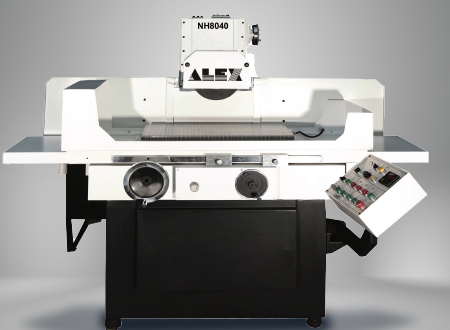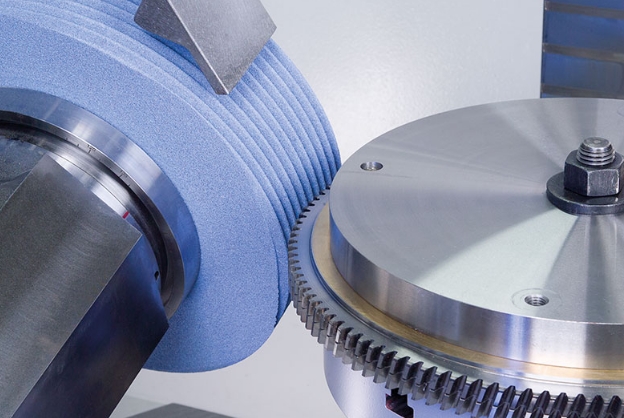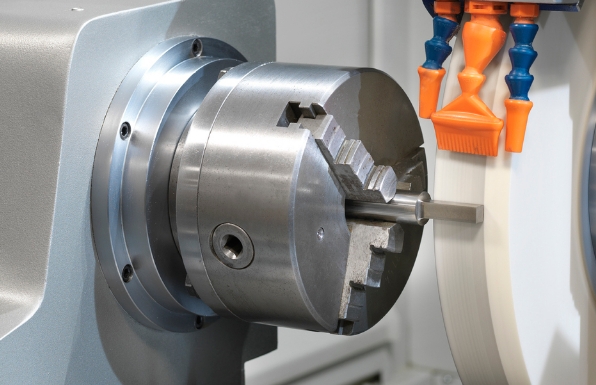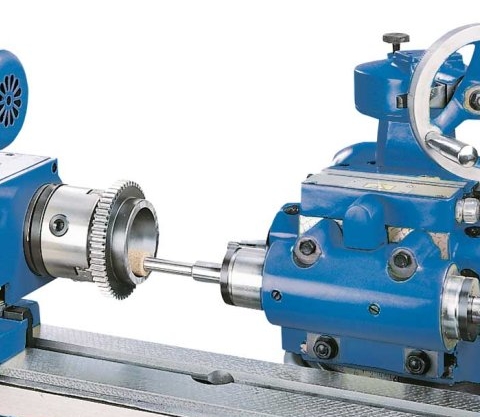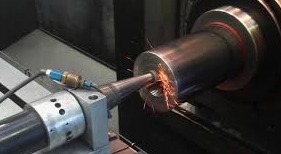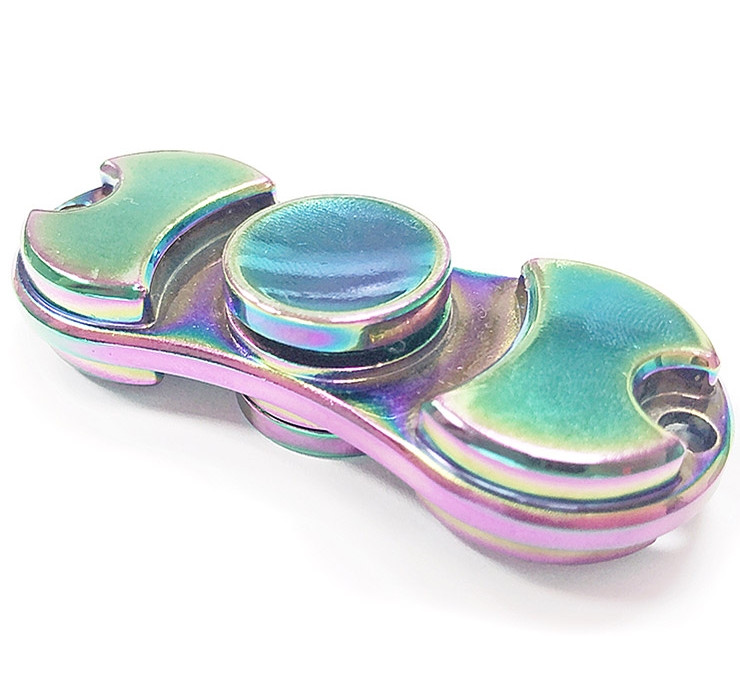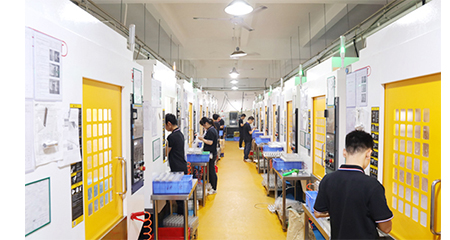Types of grinding machines: Everything you need to know
Struggling with poor surface finishes and inconsistent tolerances? Choosing the wrong grinding machine could be the cause. Learn how to pick the right one for perfect results.
Grinding machines include surface grinders, cylindrical grinders, centerless grinders, tool and cutter grinders, and more. Each type offers unique capabilities for machining precision parts. Knowing the different types of grinders and how they work helps you select the right equipment for your specific project needs.
Let’s explore each type of grinding machine, its function, and how to choose the right one for your project.
What Is a Grinding Machine?
Grinding machines are essential equipment in modern CNC machining processes, designed for high-precision surface finishing, component shaping, and material removal. A grinding machine works by rotating a grinding wheel against a workpiece using mechanical or hydraulic motion. The abrasive wheel removes fine amounts of material, allowing for highly accurate dimensions and tight tolerances.
In CNC shops, grinding equipment complements milling, turning, and EDM operations. Whether you’re machining aerospace components or automotive shafts, understanding grinder types ensures the correct fit for function and budget.
How Does a Grinding Machine Work?
Grinding machines operate on the principle of abrasion. A high-speed rotating grinding wheel, embedded with abrasive grains, removes material from the workpiece with extreme precision. Each grain acts like a tiny cutting edge, shaving off fine particles to achieve the desired shape and finish.
To control heat and protect surface integrity, coolants are applied continuously. These coolants reduce thermal damage, flush away debris, and maintain consistent grinding performance.
In the world of CNC manufacturing, grinding is an essential finishing process. When surface roughness, flatness, or concentricity must meet ultra-tight tolerances, grinding delivers unmatched precision—often down to the micron level. This makes it indispensable across industries like aerospace, automotive, and medical device manufacturing, where accuracy is non-negotiable.
What Are the Main Types of Grinding Machines?
Grinding machines are classified based on the type of surface they work on, the nature of the operation, and the degree of precision required. Each type serves a specific function in modern manufacturing and plays a key role in achieving tight tolerances, exceptional surface finishes, and high repeatability.
1. Surface Grinder
Surface grinders are used to produce ultra-flat surfaces by moving a grinding wheel across the top of a workpiece. The machine operates on the X, Y, and Z axes, allowing precise control over depth and flatness. This type of grinder is essential when a mirror-like surface finish or tight flatness tolerance is required.
This grinder type is widely used in tooling and mold industries for grinding mold bases, machine table surfaces, and precision plates. Its ability to achieve micron-level finishes makes it a go-to choice for high-end manufacturing.
2. Cylindrical Grinder
Cylindrical grinding machines specialize in shaping the outer surfaces of round or cylindrical workpieces. Both external and internal grinding can be done using different configurations, often with rotating centers supporting the workpiece.
They are commonly found in automotive, aerospace, and machine-building sectors. Ideal for producing shafts, bushings, and cylindrical rollers with high concentricity and dimensional accuracy.
3. Centerless Grinder
Unlike other grinder types, a centerless grinder doesn’t hold the workpiece in a spindle. Instead, the part is supported between a grinding wheel and a regulating wheel while resting on a blade. This allows fast, continuous grinding without interruptions.
It’s a perfect solution for high-volume production of parts like pins, rods, and tubes. Due to the lack of clamping, this type of grinder ensures quick setups and excellent roundness over long production runs.
4. Internal Grinder
Internal grinders are designed to finish the inner diameter of cylindrical parts. They work by rotating the workpiece and the grinding wheel simultaneously, often within tight spatial tolerances.
This grinder is essential in bearing, gear, and aerospace component production. It ensures high-precision internal surfaces where press-fit tolerances or bearing fits are critical.
5. Tool and Cutter Grinder
Tool and cutter grinders are multi-functional machines used to sharpen, recondition, or manufacture precision cutting tools. These machines often incorporate multiple grinding heads and CNC programming to produce complex tool profiles.
Ideal for machine shops and tool manufacturing companies, they are used for maintaining end mills, drill bits, reamers, and special tools, extending tool life and reducing tooling costs.
6. Gear Grinder
A gear grinder is a highly specialized machine used to finish gears after heat treatment. It uses either form grinding or generating grinding to achieve precise tooth profiles and smooth finishes.
This grinder type is essential in automotive, aerospace, wind energy, and defense sectors. It ensures smooth gear engagement, quiet operation, and long-lasting transmission performance.
7. Jig Grinder
Jig grinders are designed for grinding holes and complex contours with extremely tight tolerances. The machine uses a high-speed spindle and precision-controlled movement to create geometrically accurate shapes.
Used mainly in die-making and aerospace sectors, jig grinders help create accurate tooling for injection molding, metal stamping, and precision hole finishing, often down to the micron level.
8. Belt Grinder
A belt grinder uses a coated abrasive belt for material removal, ideal for quick stock removal, surface shaping, and blending. It’s more flexible than wheel-based grinders and comes in handheld or stationary versions.
Popular in metal fabrication, welding, and artisan workshops, this grinder type is perfect for deburring, polishing, and contouring work on soft metals, stainless steel, and non-ferrous materials.
9. Bench Grinder
Bench grinders are compact, versatile machines mounted on workbenches, often featuring two grinding wheels for coarse and fine operations. They are commonly used for sharpening tools, shaping metal, and general maintenance tasks.
These grinders are staples in both industrial and hobbyist settings, offering quick access to grinding power for welders, machinists, and mechanics.
10. CNC Grinder
CNC grinders are advanced, programmable grinding systems offering high precision, automation, and repeatability. The machine is controlled by computer systems that allow multi-axis motion and complex part geometries.
They are used in high-precision industries where consistency and speed are essential, including aerospace, medical device, and automotive part manufacturing.
11. Fine Grinding Machine
A fine grinding machine specializes in ultra-precise surface finishing. It uses flat honing or lapping processes to achieve sub-micron surface flatness and roughness.
Perfect for industries like semiconductors, optics, and electronics, these machines handle delicate components such as wafers, lenses, and microchips where ultra-smooth surfaces are critical.
12. Big Grinding Machine
A big grinding machine is built to handle heavy, oversized components like turbines, rolls, and steel plates. These grinders feature large worktables, powerful motors, and heavy-duty construction.
They’re commonly found in shipyards, energy plants, and large-scale machinery production, where grinding accuracy must be maintained even with extremely large and heavy parts.
13. Grinding Lathe
A grinding lathe, or lathe with integrated grinding capability, combines turning and grinding operations in one setup. This hybrid approach eliminates the need for part transfers and ensures perfect alignment between turning and grinding.
It’s ideal for precision shaft manufacturing, hydraulic components, and parts requiring ultra-round finishes. A grinding lathe enhances efficiency and precision in one streamlined operation.
What Are the Advantages and Disadvantages of Grinding Machines?
Grinding machines are essential tools in modern manufacturing, especially when precision, surface finish, and material hardness are critical factors. However, like all machining processes, grinding has its trade-offs. Understanding both the benefits and limitations of grinding machines helps manufacturers make informed decisions based on production goals, material types, and budget considerations.
| Aspect | Advantages | Disadvantages |
|---|---|---|
| Precision (Accuracy & Tolerance) | Achieves micron or sub-micron precision; ideal for tight-tolerance parts | High-precision machines are costly and require controlled environments |
| Surface Finish | Produces mirror-like or ultra-smooth finishes (Ra ≤ 0.1μm) | Time-consuming for high stock removal; slow material removal rate |
| Material Versatility | Can grind hardened steel, carbide, ceramics, and composites | Less effective on soft or gummy materials; can clog abrasive wheels |
| Geometric Flexibility | Supports complex profiles, contours, internal bores, and gear teeth | Complex shapes may require special setups, jigs, or custom tooling |
| Production Volume (Throughput) | Centerless and CNC grinders enable mass production with consistent quality | Manual or jig grinders are slower; unsuitable for high-speed roughing |
| Operator Skill Level | CNC grinders minimize need for operator input; safer, more consistent results | Manual machines require highly trained operators for repeatable accuracy |
| Automation Potential | Easily integrated with robotics, conveyors, and IoT sensors for smart factories | High initial setup cost and programming complexity for automated systems |
| Tool Wear | Grinding wheels wear evenly and predictably; manageable with regular dressing | Requires frequent maintenance, dressing, and replacement for optimal results |
| Thermal Control | Use of coolants minimizes burn marks, cracks, and heat deformation | Overheating risks remain if coolant fails or process parameters are wrong |
| Cost & Investment | Cost-effective for long-term precision work and finishing processes | High upfront machine cost and consumables |
How Are Tool & Cutter Grinders Used for Custom Tools?
Tool & Cutter Grinders are specialized machines designed for sharpening, regrinding, and shaping cutting tools. In custom tool production, they play a crucial role in creating precise geometries and extending tool life.
These grinders restore the cutting edges of worn tools like drills, end mills, and taps, bringing them back to optimal performance. They can also regrind tools to meet new specifications for different machining tasks.
Additionally, Tool & Cutter Grinders can create custom tools from blanks, with unique profiles, tapers, and flutes. They also allow for fine adjustments to tool features like helix angles and reliefs to meet specific machining requirements.
What Is the Role of CNC Grinding Machines in Modern Manufacturing?
CNC Grinding Machines have revolutionized modern manufacturing by offering greater precision, automation, and versatility. With advanced CNC integration, automatic wheel dressing systems, and multi-axis capabilities, these machines provide exceptional accuracy, efficiency, and adaptability for a wide range of grinding operations.
| Feature | Description | Benefits |
|---|---|---|
| CNC Integration | CNC allows for automated programming of grinding processes, including tool paths and speeds. | Enhances precision, reduces manual intervention, and ensures consistency in high-volume production. |
| Automatic Wheel Dressing | Automatic systems continuously dress the grinding wheel, ensuring it remains sharp and effective during operations. | Maintains grinding quality, extends wheel life, and minimizes downtime for wheel maintenance. |
| Multi-Axis Flexibility | CNC grinding machines can operate on multiple axes (e.g., 3, 4, 5, or even 6 axes), enabling complex geometries and shapes. | Enables the production of intricate parts with high precision and flexibility in tool design. |
| Real-Time Monitoring & Adjustments | Advanced sensors and feedback systems monitor grinding conditions and make real-time adjustments. | Improves process stability, reduces errors, and enhances overall part quality. |
| High Throughput | CNC grinders can perform multiple operations in a single setup. | Increases productivity, reduces setup time, and allows for more efficient use of time and materials. |
| Customization and Adaptability | CNC machines can be reprogrammed easily for different part designs and specifications. | Ideal for custom parts and short production runs without the need for extensive retooling. |
Key Components of a Grinding Machine
A grinding machine consists of several essential components, each playing a critical role in the grinding process:
1. Grinding Wheel
The grinding wheel is the abrasive tool responsible for material removal. It rotates at high speeds and is available in different types for various applications like surface or cylindrical grinding.
2. Spindle
The spindle holds and rotates the grinding wheel. Powered by the machine’s motor, it ensures stability and precision during grinding.
3. Bed or Base
The bed provides structural support to the machine and absorbs vibrations. It also houses components like the table and headstock, ensuring accuracy during operations.
4. Controller
The controller regulates the grinding machine’s movements. In manual machines, the operator adjusts settings manually, while CNC machines automate the process for greater precision and efficiency.
5. Workholding Devices
These devices, such as chucks or magnetic tables, securely hold the workpiece in place during grinding, ensuring stability and accuracy.
6. Coolant System
The coolant system controls heat generated during grinding, preventing damage to the workpiece and wheel while improving grinding efficiency.
Which Industries Rely Most on Grinding Machines?
Grinding machines are crucial in several high-precision industries due to their ability to provide superior surface finishes and tight tolerances. These industries depend on grinding machines for efficient material removal, intricate shaping, and finishing of parts.
| Industry | Application | Why Grinding Machines Are Essential |
|---|---|---|
| Medical | Grinding of surgical tools, implants, and precision components. | Grinding ensures high precision, smooth finishes, and tight tolerances required for medical devices. |
| Aerospace | Manufacturing turbine blades, gears, and precision engine components. | Aerospace parts need extremely tight tolerances and superior surface finishes, which grinding provides. |
| Automotive | Grinding of engine components, transmission parts, and braking systems. | Grinding offers high precision for critical parts like gears, crankshafts, and brake discs. |
| Optics | Polishing and grinding of lenses, mirrors, and optical components. | Grinding ensures optical components meet the precise curvature and finish necessary for high clarity. |
| Mold Manufacturing | Precision grinding of molds, dies, and core inserts for injection molding. | Grinding ensures molds have the fine details and smooth surfaces needed for quality plastic parts. |
How to Choose the Right Grinding Machine?
Selecting the right grinding machine involves considering various factors like material type, required tolerance, production volume, part shape, and budget. Each of these elements plays a crucial role in ensuring that the machine you choose will meet your specific production needs and deliver high-quality results.
1. Material Type
The material you need to grind significantly impacts the choice of grinding machine. Different materials, such as metals, ceramics, or plastics, have unique characteristics that require specialized grinding approaches. For instance, hard metals like steel or titanium may need machines with high-speed capabilities and durable grinding wheels, while softer materials such as aluminum or plastics may require slower speeds and specific abrasives to avoid material damage or clogging.
2. Required Tolerance
Tolerance refers to the acceptable level of variation in the dimensions of the finished part. If your parts need extremely tight tolerances, such as those required in industries like aerospace or medical manufacturing, a CNC grinding machine is the best choice due to its high precision and repeatability. For less demanding applications, a manual or semi-automatic grinder may suffice, offering sufficient accuracy at a lower cost.
3. Production Volume
The volume of parts you need to produce influences the type of grinder to choose. For low-volume production or prototypes, manual or CNC grinders that offer flexibility and easy setup are ideal. On the other hand, high-volume production requires automated grinding machines that can operate continuously with minimal human intervention, maximizing efficiency and output. High-throughput machines ensure consistency and reduce cycle time, making them suitable for mass production environments.
4. Part Shape
The complexity of the part shape is another important factor. Different grinding machines are designed to handle specific part geometries. For instance, surface grinders are ideal for flat surfaces, while cylindrical grinders are best suited for round parts. If your work involves more intricate geometries or parts with multiple angles, you may need specialized equipment such as tool and cutter grinders or advanced multi-axis CNC grinders to achieve the desired results.
5. Budget
Your available budget will play a crucial role in determining the right machine. Manual grinders tend to be more affordable and are well-suited for low-volume or less complex tasks. CNC grinding machines, while more expensive, offer greater precision, automation, and flexibility, making them ideal for high-precision applications. While it may require a larger initial investment, a high-end machine with advanced features can improve efficiency and reduce long-term operating costs.
Start Your CNC Machining Project at VMT
With over 15 years of experience, VMT offers complete machining services including high-precision grinding machine solutions. Our 100+ machines include 4 & 5-axis CNC centers, turning & milling machines, and specialized grinding equipment.
More Resources: What is Grinding? | Definition, Process, Types and Applications
In Conclusion
Understanding the different types of grinding machines is essential for improving part quality and achieving precision. VMT provides expert CNC grinding solutions tailored to meet the needs of your precision project.
Frequently Asked Questions About Grinding Machines
How Are Surface Grinders Used in Industrial Parts Finishing?
Surface grinders provide precise, flat finishes on metal or non-metal surfaces, ideal for creating a smooth, uniform appearance. They remove small imperfections and achieve tight tolerances, making them essential in toolmaking, die work, and high-precision components. Their ability to produce consistent finishes boosts both functionality and aesthetics of industrial parts.
What Makes Cylindrical Grinders Essential in Shaft and Roller Production?
Cylindrical grinders ensure roundness, concentricity, and surface finish in shafts and rollers. They allow for machining both internal and external cylindrical surfaces with extreme precision, which is critical in high-speed and load-bearing applications. Their flexibility and accuracy make them indispensable for producing consistent, high-performance rotating components.
When Should You Use a Centerless Grinding Machine?
Use centerless grinding when working with long, thin, or small-diameter parts that can’t be held between centers. It’s ideal for high-volume production, as it offers fast, precise, and continuous grinding. Common applications include automotive pins, shafts, and medical instruments requiring smooth, uniform finishes.
What Safety Precautions Should Be Taken During Grinding?
1. Always wear personal protective equipment like goggles, gloves, and ear protection.
2. Ensure the workpiece and wheel are properly secured.
3. Never exceed the grinding wheel’s speed rating.
4. Regularly inspect wheels for cracks, use guards, and maintain a clean workspace.
5. Proper training and ventilation are also crucial for safe operation.


